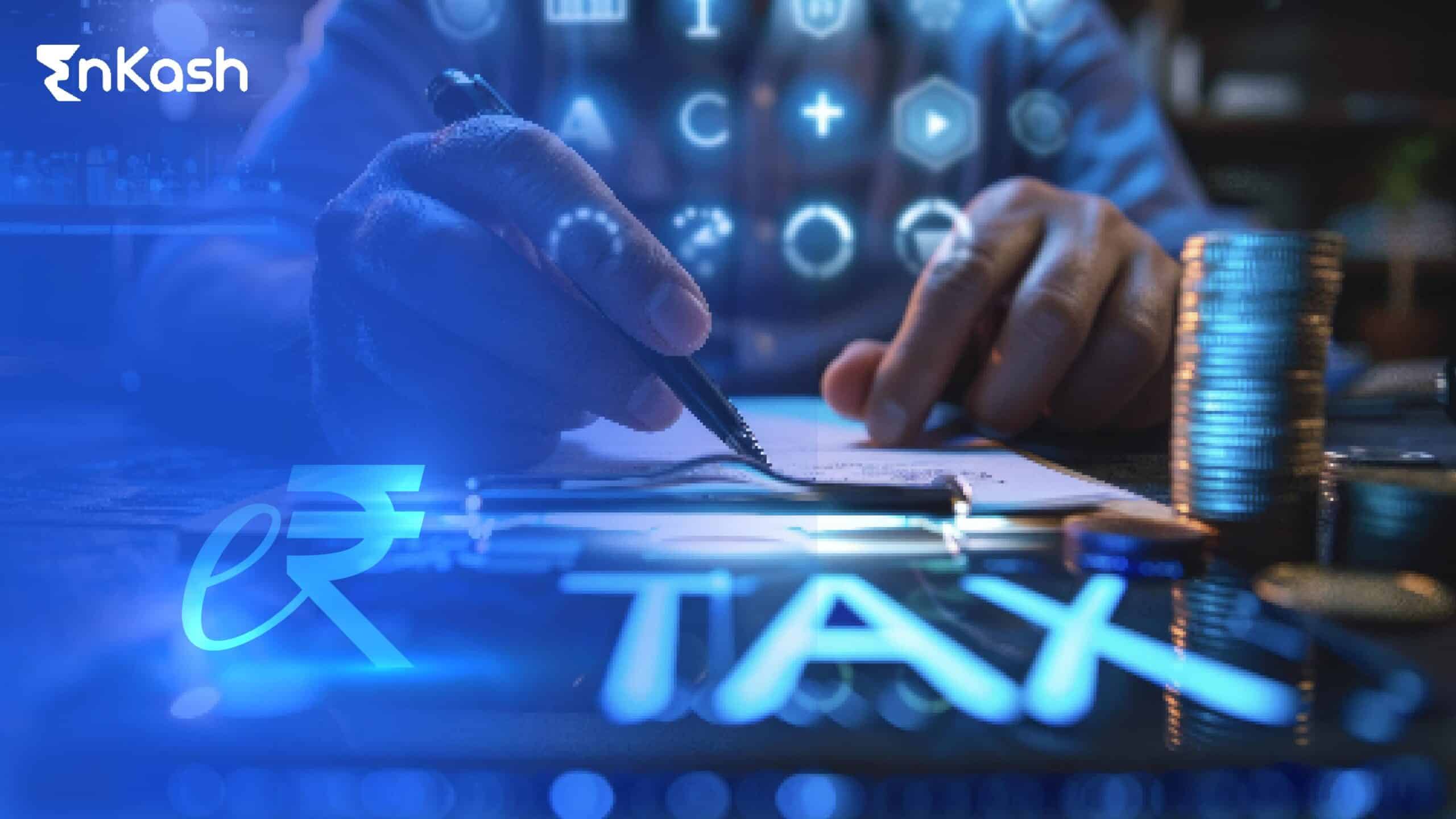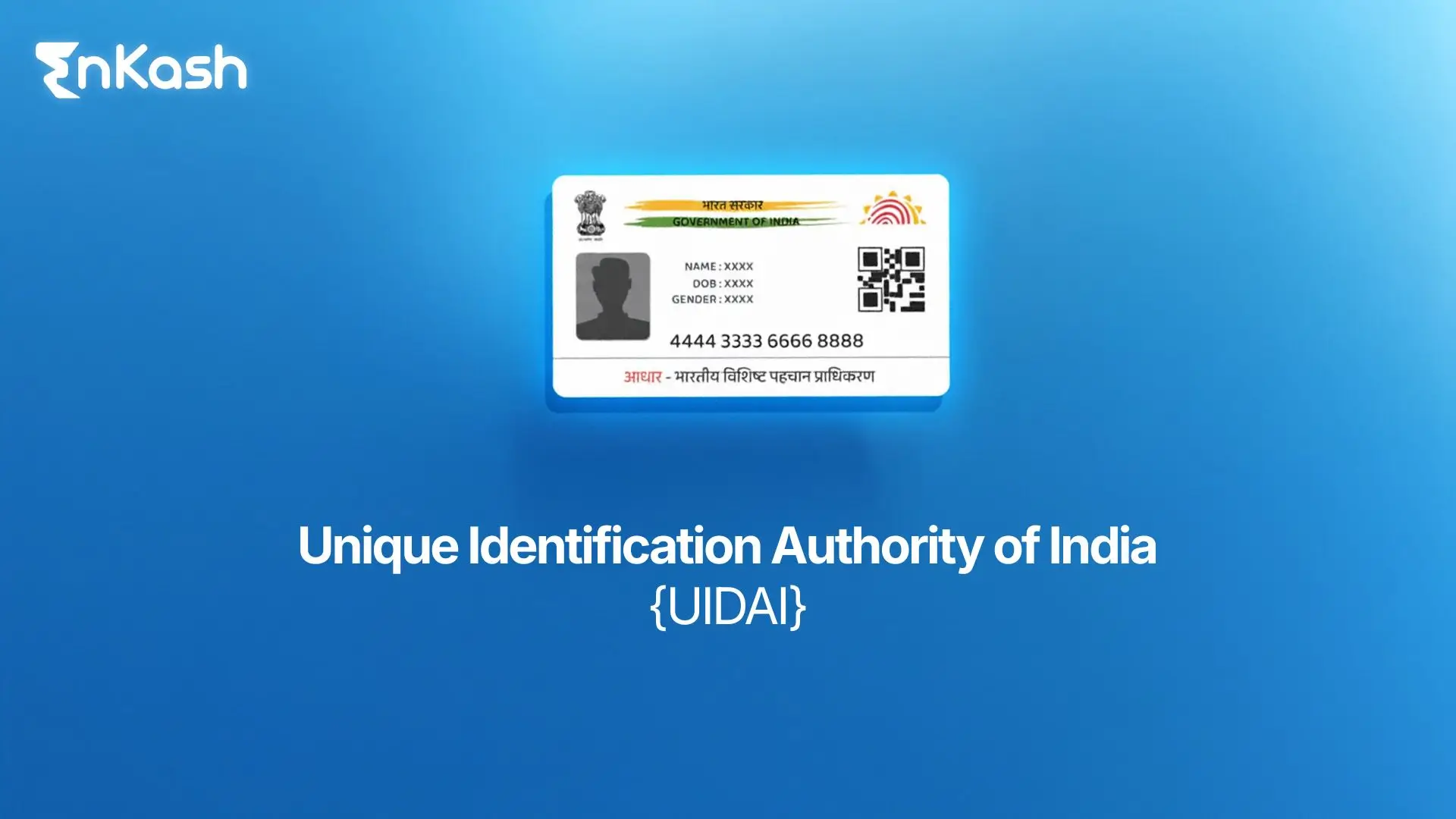State Goods and Services Tax (SGST) is a tax system that is levied only on intra-state transactions of goods and services. It is collected by the states and is partnered with CGST (the tax levied by the central government) to streamline tax collection and ensure both central and state authorities receive their fair share of revenue. SGST helps a business avail of input tax credits to avoid reducing the cascading effect of taxes and ensure transparency. It plays a key role in the integration of taxes across states to ensure the development of both the economy and the state finances.
What is SGST?
The SGST was introduced in 2017 as a part of the larger goods and services tax (GST) reforms to simplify India’s tax structure and replace state-level taxes such as value-added tax (VAT), luxury tax, and entertainment tax. Earlier, those multiple taxes had created complexity in tax rates and structure across states and also led to confusion and cost increases for businesses. SGST created uniformity in tax structure across states to reduce confusion about tax rates and ensure consistency in the taxation of goods and services.
Each state has an SGST Act, according to which SGST is collected and administered by the state governments. State Goods and Services Tax is levied at the same rate as CGST. Consequently, the total collection of GST on any intra-state transaction is equally borne by the Centre and state governments. If the rate of GST on a product is 18%, the SGST will be 9%, and CGST will be 9%.
A business that only operates in a state must collect SGST, file returns, and remit the appropriate tax to the state government. Further, businesses can also claim ITC on the SGST they pay on purchases, as these taxes can be set off against their total tax liability.
SGST applies to all kinds of goods and services supplied within the state, with a few exceptions such as alcohol and petroleum products, which are taxed separately.
In short, SGST is one of the major pillars of India’s GST, a simpler, transparent tax regime guaranteed to give state governments a stable revenue base and do away with the multiple layers of indirect taxation that businesses and consumers have had to navigate for so long.
Read More: GST State Code List
How to Calculate SGST on Goods and Services?
Calculating SGST is essential for businesses involved in intra-state transactions. SGST is levied when the buyer and seller are located in the same state. The rate of SGST is equivalent to the total GST rate applicable to the goods or services sold. SGST bears the total GST rate, and CGST bears the other.
Steps to Calculate SGST
The process of how to calculate SGST starts with finding the transaction value, i.e., the price at which the goods or services are sold, discounts excluded, but delivery or handling the transaction value; one would have to find the GST rate to be applicable on the product or service. The GST rates in India are divided into the following slabs: 0%, 5%, 12%, 18% and 28%. For instance, the 0% slab is provided for essentials such as fresh fruits, whereas the most expensive items are charged with tax at a hefty 28% rate.
In the case of sales within a state, the GST rate is equally divided between SGST and CGST. For example, if the GST rate is 18%, 9% would be SGST, and 9% would be CGST. This way, the central and state governments share their part of the tax revenue.
In the case of SGST, you just multiply the SGST rate with the transaction value. For instance, if the transaction value for a sale of goods is ₹20,000 and the relevant GST rate is 18%, then the SGST portion works out to 9% of ₹20,000, which is ₹1,800; the same ₹1,800 will be collected by the state government as tax in the form of CGST, and the total GST on this transaction will be ₹3,600.
Similarly, if you provide a service valued at ₹50,000 and the GST rate is 12%, the total GST would be ₹6,000. Of this, ₹3,000 will be levied as SGST, while the remaining ₹3,000 will be the CGST.
Important Considerations
Some of the important considerations are as follows:
- State Goods and Services Tax is applied to intra-state transactions.
- IGST (Integrated Goods and Services Tax) is applied if two states are involved in the transaction.
- Proper calculation and documentation of SGST are necessary for the business to avoid penalties.
- Businesses can also claim Input Tax Credit (ITC) on SGST paid for inputs, which helps lower their overall tax burden.
Read More: Types of GST
SGST Features
As you know What is SGST, you must learn about its main features. These features give State Goods and Services Tax a different character than other taxes. These SGST features are important not just for the proper functioning of the tax law but also for the smooth collection of taxes, tax compliance by taxpayers, and advantages for ordinary businesses. Below are some key SGST features that businesses and individuals should understand.
Dual Tax System
Most importantly, SGST is applicable under the dual GST model adopted in India. In intra-state transactions, the transaction has to pay both SGST and CGST. The state government collects the SGST, and the CGST goes to the central government. This way, both the central and the state governments get their share of revenue from any transaction in a state.
Input Tax Credit (ITC)
The most important characteristic of the SGST is the Input Tax Credit (ITC). It enables the business to reduce the amount of SGST it pays on its sales against the SGST it pays on the inputs, whether they are goods, services or anything else. The ITC is a crucial feature of GST that avoids the cascading effect of taxes and makes sure that the same product or service does not get taxed at each step.
Uniform Taxation
SGST ensures uniform taxation across states. This was not the case earlier, when various states had different rates for taxes such as VAT, tax on luxury, entertainment tax, etc. SGST is levied on the same goods and services across the country, making it easier to comply for businesses operating in multiple states, as well as to reduce tax-induced price differentials.
Revenue for State Governments
SGST is the major revenue stream for state governments. The tax contributes towards funding public services (eg, infrastructure), and other schemes of the state. And as SGST is a steady income for states, it makes them more autonomous and less dependent on central allocations.
Simplified Compliance
State Goods and Services Tax has also eliminated many tax hassles by introducing one standardized system of tax return filing and ending multiple state taxes with different filing requirements. Now, the only tax structure that businesses need to abide by for one single and standardized tax return is SGST for intra-state transactions. This simplifies the nightmare of tax administration and makes tax compliance easier and more transparent.
Transparent Pricing
SGST ensures transparency in pricing. Earlier, many indirect taxes were bundled up in the price of goods and services, and consumers often didn’t know the exact amount of tax they were paying. Now, both SGST and CGST are clearly mentioned on the invoice. This helps build trust between the consumer and the business, leading to better relationships.
Reduced Costs for Small Businesses
SGST has also made things easier for small businesses, some of whom had to deal with the burden of indirect taxes earlier. Those with an annual turnover below a certain level are exempt from SGST registration, reducing their compliance burden. And, those that do register can claim ITC and filing is easier.
After GST, it became easy for businesses to abide by the law, claim an input tax credit, and contribute to the development of the state. It becomes seamless for consumers and every customer to pay the same taxes for a good or service, creating a fair atmosphere.
Read More: GST Registration Requirements
SGST Rates & Categories of Goods and Services
The State Goods and Services Tax has been divided into various slabs based on the nature of goods and services. This structure ensures that taxation is fair and balances basic necessities and luxury items. The central and state government representatives have fixed the rates under the GST council.
SGST Rate Slabs
SGST is charged on the same applicable GST rates in India, which have been divided into several slabs to provide diversification to the nature and necessities of goods or services. The rates are as follows:
- 0% Tax: Products such as fresh fruits and vegetables, grains, wheat and other essential edibles are free from SGST. This is done to keep essential items affordable to the general public.
- 5% Tax: Packaged food, basic medicines, as well as essential medicines and transportation services, are taxed at a lower rate. This category makes sure that the basic needs of consumers are met without having to pay too much tax.
- 12% Tax: This slab includes processed food, pharmaceuticals, and household appliances. Its tax rate is reasonable to balance affordability with revenue.
- 18% Tax: It is the most widely applied rate, covering a wide range of products and services, from gadgets to furniture and restaurant services. The 18% slab is crucial to both generating large revenues while maintaining affordability for middle-tier goods.
- 28% Tax: The highest tax slab is applied to luxury goods and non-essential items such as expensive cars, watches, and cigarettes. The higher tax reduces luxury consumption and raises money from luxury spending.
Read More: Difference between CGST SGST and IGST
Special Categories and Exemptions
Certain goods and services fall under specific GST exemptions. For instance, goods such as petroleum products, alcohol, and electricity are currently out of the GST regime and are taxed separately under the state and central levies. But, the GST Council could bring them under the GST net in the future.
How Rates Are Determined
The GST Council meets regularly to assess and revise State Goods and Services Tax rates based on economic needs, industry requirements, and public interest. This gives the government flexibility to increase or decrease the rates depending on inflation, revenue requirements, or industry growth, even though these are fixed across states.
Impact of SGST Rates on Pricing
The different slab rates of SGST impact the final prices of goods and services for consumers. Since essential items such as food and medicines are taxed at a lower rate, they are made available at a lower rate as well. In contrast, luxury and other non-essential items are taxed at a higher rate to discourage their consumption. This also works to level the prices of all goods in the economy, where essential items are more affordable, and luxury items contribute more to the government’s tax revenue.
Importance of Compliance with Rate Slabs
Since SGST is the tax component that businesses need to collect from their customers, businesses must know if their products or services are under the 0%, 2%, or 5% tax slab. Failing to do so may result in penalties, audits, or an increase in input tax credit.
Comparing SGST with CGST and IGST
The three components of the Indian GST tax model are SGST (State Goods and Services Tax), CGST (Central Goods and Services Tax) and IGST (Integrated Goods and Services Tax). Each tax deals with different kinds of transactions: SGST and CGST deal with intra-state transactions, and IGST deals with inter-state (and international) transactions.
SGST vs. CGST
The state government collects SGST, and the CGST goes to the centre. Both SGST and CGST are the same for intra-state transactions. So, SGST + CGST = Total GST. This is a dual tax system – with both governments getting their share in revenue in case of a sale in the same state. For example, if a product is taxed at 18%, 9% is collected as SGST and 9% as CGST. This dual tax system ensures both governments receive their respective shares of revenue from intra-state sales.
SGST vs. IGST
IGST is put on transactions across states when goods or services are sold from one state to another. Unlike State Goods and Services Tax (SGST) which is shared between the state and central governments, IGST is collected by the centre alone. However, after a while, a part of it is passed on to the state in which the goods or services are consumed. IGST is also put on imports and exports, making it a vital part of cross-border trade.
Read More: Types of GST returns
Challenges in Tax Compliance
Despite the simplification brought about by the State Goods and Services Tax, businesses still face challenges. For example, filing precise and timely returns is crucial for businesses to avoid penalties and audits. Secondly, the company must be updated with the changes in rates and rules of SGST from time to time since these are integral to tax computation and pricing.
SGST has certainly benefited Indian businesses by making tax compliance easy, providing ITC benefits and promoting uniformity in taxation. However, businesses have to be watchful regularly to extract the full benefits of SGST.
Conclusion
The State Goods and Services Tax (SGST) has revolutionized India’s tax framework by streamlining compliance. It has reduced administrative complexities and ensured transparency in the taxation process. It has also simplified tax filings for businesses by eliminating multiple state-level taxes. Thus, there is an efficient use of Input Tax Credit to lower tax liabilities and improve cash flow.
For consumers, SGST has brought clarity and consistency to pricing, as all the taxes are mentioned clearly on invoices. It ensures a uniform rate across states.
SGST is crucial in ensuring fair revenue sharing between the central and state governments while promoting a conducive environment for businesses. By simplifying tax processes and ensuring predictable pricing, SGST supports economic growth and strengthens the overall business environment in India.
Read More: GST Payment
FAQs
How does SGST impact startups and small businesses in India?
SGST has streamlined tax compliance for a startup or small business by replacing multiple state-level taxes with a single taxation system. Businesses with a turnover below a certain threshold are exempted from paying SGST. For those registered under GST, the ITC facility helps to reduce tax liabilities, thereby ensuring small businesses can better balance their cash flows. The ease of compliance allows startups to concentrate on the scaling of operations rather than navigating cumbersome taxation systems.
Can businesses use the same GST portal to file SGST and CGST returns?
Yes, businesses file SGST and CGST returns through a single GST portal. This is done to make filing easy, as businesses just need to fill out one return for both taxes and do not need to go to different portals to do so. Earlier, businesses had to go to separate tax return portals of two governments, state and central.
What happens if a business overpays SGST?
An overpaid State Goods and Services Tax can be claimed as a refund through the GST portal. To establish the claim, supporting documents must be submitted. The amount will be refunded to the bank account or adjusted against future SGST liability. Prompt and accurate filing helps to avoid unwarranted delays in refunds.
How does SGST apply to e-commerce businesses?
SGST applies to intra-state sales made through digital platforms for e-commerce businesses. The GST law requires e-commerce operators to collect SGST and CGST at the point of sale and remit it to the government. This system ensures that taxes are accurately accounted for, even in digital transactions. E-commerce companies also benefit from Input Tax Credit, which helps reduce their tax liability on purchases made to run their operations.
Does SGST apply to exports from India?
No, exports are called zero-rated supplies under GST. That means no SGST will be levied on goods or services exported from India. Any business engaged in exports can avail of a refund on taxes paid on inputs used in the process of manufacturing export goods. This makes exports attractive by reducing the tax burden on businesses and making them more competitive in the global market.
How does SGST help in reducing tax evasion?
SGST, combined with CGST, has helped reduce tax evasion by implementing a robust and technology-driven system that tracks every transaction. The availability of ITC encourages businesses to report their purchases and sales accurately to claim tax credits. Moreover, the transparency and accountability built into the GST system discourage underreporting or non-compliance, making tax evasion more difficult.
How is SGST calculated when services are rendered in multiple states?
IGST applies to services supplied across states but not applied within the same state. State Goods and Services Tax (SGST) applies when a service is provided entirely within a state. To find out which tax – SGST or IGST – will apply to a transaction, a business must decide where the supply is taking place. This will help work out how to tax the transaction and report it.
Can consumers claim refunds on SGST paid?
Consumers cannot claim refunds on SGST paid for goods and services. SGST is embedded in the price of products, and unlike businesses, consumers do not benefit from Input Tax Credit. However, consumers get indirect benefits from the uniformity and transparency of SGST, as it reduces hidden costs in pricing and ensures they are not overcharged due to cascading taxes.
How often do businesses need to file SGST returns?
The frequency of SGST return filings depends on the business’s turnover. Businesses must file monthly returns, which include details of SGST collected and paid, as well as any claims for Input Tax Credit. Smaller businesses under the Composition Scheme may file quarterly returns. Timely GST filing is crucial to avoid penalties and ensure smooth operations.
Can State Goods and Services Tax rates change, and how often does this happen?
Yes, SGST rates can be changed because the GST Council determines them. They are currently reviewed and adjusted at least once a year to reflect the economic environment and industry demand. For instance, the SGST rate can vary slightly from state to state due to inflation adjustments or targeted efforts to incentivize certain industries.








